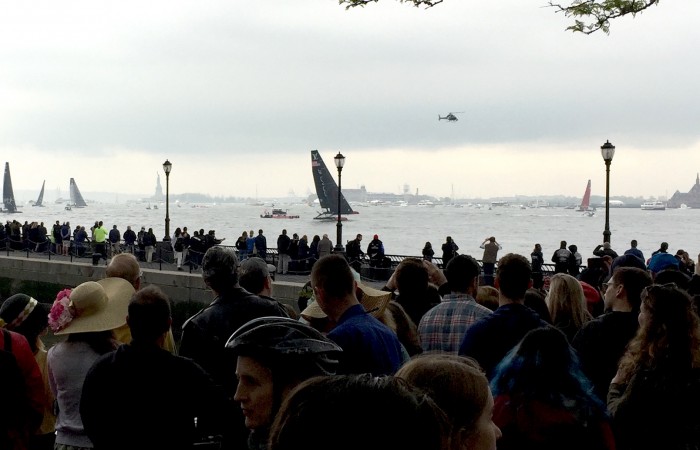
What the America’s Cup teaches us about finding our audience
By Dan McDonough, Jr.
The America’s Cup made its way back to New York City this past weekend for the first time since 1920. Nearly a century ago, the names involved in competitive sailing included Lipton, Vanderbilt, and Morgan. Today the sport is the beneficiary of the modern gilded class including Larry Ellison and Ted Turner.
While the theme regarding its adherents may be obvious, what isn’t apparent is why the Cup left New York so long ago — and why now it has come back.
The New Yorker reported that by 1920, the harbors in New York suffered from a level of traffic and pollution that tested sailors’ patience as much as the shallow and narrow waters of the race tested their mettle. So the event was exiled to more accommodating waters in Newport, Rhode Island. Only recently have Ted Turner and Larry Ellison — the founder of Oracle and of Team Oracle, defending champions of the Cup — been influencing the choice of venue with the intent of making the sport “more contemporary, and more lucrative, å la Formula One racing or the X Games,” according to The New Yorker.
Ellison no doubt knows well his prospective audience, and he knows how a big swath of that audience calls New York City home. So he pushed to bring the America’s Cup right to his audience, and the event drew a reported record crowd of some 100,000 viewers on the banks of the Hudson River, despite miserable weather and one day of the two-day race being essentially cancelled.
Even when it’s a struggle, or conditions make it difficult, bringing your message and story right to where your audience lives is a challenge always worth tackling.
Oftentimes at Woden, our business software clients will quickly dismiss a platform such as Facebook because it isn’t a B-to-B network. Or a consumer products company will shy away from Snapchat because they don’t understand how it works. When they find excuses to ignore the “homes” of their prospective audiences, they fail to amplify their message in a way that connects.
Understanding where your prospects spend their time and how to reach them there is just as important as crafting your message, lest that effort be lost on irrelevant ears. While some places may not be an obvious choice for amplifying your story, upon further inspection you may discover that the least-obvious and most difficult places can also be the most lucrative.
“The Hudson today is still crowded, shallow, and narrow, but New York is once again an attractive venue for the America’s Cup precisely because of its visibility,” longtime New York Yacht Club Historian John Rousmaniere told the New Yorker in an interview. “It’s one of the rare sailing venues where action can be seen on shore — and it’s in the television-friendly Eastern time zone.”
CNN said it best: “The boats may have changed beyond recognition but one thing has remained the same in the 165-year history of the America’s Cup — its allure for the world’s wealthiest people and power brokers.”
“It may not shock you,” Rousmaniere said, “but this is all about money.” The organizers of the America’s Cup knew that New York would be a logistical challenge to bring back the famous boat race. But they also knew that New York presented a huge opportunity of an audience ready to make something old new again.
Dan McDonough, like all sailors, likes to tell stories. He acts as though he owns a 24-foot Dunkirk that actually belongs to one of his best friends. He is a founding partner at Woden. Download our free StoryBlueprint, or send us an email at connect@wodenworks.com to discuss how we can help tell your story.


